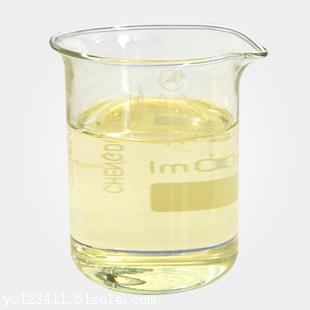
Antioxidant BHT 264
CAS:128-37-0
Purity:99%
Contact Now
We will contact you as soon as possible
Your Location:Home >Products >Industrial Chemicals >9003-11-6


Product Details
|
Chemical Properties |
Polyether Polyol generally occur as white, waxy, free-flowing prilled granules, or as cast solids. They are practically odorless and tasteless. At room temperature, poloxamer 124 occurs as a colorless liquid. |
|
Originator |
Polykol ,Upjohn, US ,1958 |
|
Uses |
Polyether Polyol is a liquid surfactant polymer. They are made by reacting organic oxides and glycols, and contain reactive hydroxyl (OH) groups. The main organic oxides used are ethylene oxide, propylene oxide, butylene oxide, and epichlorohydrin, while the main glycols used are ethylene glycol, propylene glycol, water, glycerine, sorbitol, sucrose, and THME. |
|
Production Methods |
Polyether polyols are produced through a catalyzed batch process that involves reacting cyclic ethers, like ethylene oxide (EO) or propylene oxide (PO), with di- or polyfunctional starter molecules. The process also requires a catalyst, such as a strong base like potassium hydroxide (KOH) or double metal cyanide (DMC) complexes. The reaction is typically carried out at a temperature of 100–110°C, and heat removal and control over the PO feed rate are important because propoxylation is exothermic. Once the PO has been fully consumed, the catalyst is removed from the mixture. |
|
Brand name |
Lutrol F (BASF); Pluracare (BASF); Pluronic (BASF). |
|
Therapeutic Function |
Pharmaceutic aid (surfactant) |
|
General Description |
Polyether polyols, also known as polyalkylene glycol (PPG), are synthetic oils and linear polymers with many uses. Pluronic? L-81 is a lipoprotein secretion inhibitor. |
|
Safety Profile |
When heated to decomposition it emits acrid smoke and irritating fumes. |
|
storage |
Polyethylene-polypropylene glycol is stable materials. Aqueous solutions are stable in the presence of acids, alkalis, and metal ions. However, aqueous solutions support mold growth. The bulk material should be stored in a well-closed container in a cool, dry place. |
|
Incompatibilities |
Depending on the relative concentrations, poloxamer 188 is incompatible with phenols and parabens. |
|
Regulatory Status |
Included in the FDA Inactive Ingredients Database (IV injections; inhalations, ophthalmic preparations; oral powders, solutions, suspensions, and syrups; topical preparations). Included in nonparenteral medicines licensed in the UK. Included in the Canadian List of Acceptable Non-medicinal Ingredients. |
InChI:InChI=1/C3H6O.C2H4O/c1-3-2-4-3;1-2-3-1/h3H,2H2,1H3;1-2H2
The presence of carbonate groups along the polymer backbone of polyether carbonate polyols leads to distinctly different physicochemical properties compared to structurally related polyether polyols. For instance, polyether carbonate polyols are characterized by their substantially higher viscosity.
Thermoplastic polyurethane, based on 4,4′-diphenylmethane diisocyanate and polyether polyol, was degraded by glycol and ethanolamine at 170 °C. Optimum conditions for the glycolysis of thermoplastic polyurethane were investigated by adjusting the ratio of polymer to degradation reagent, glycol to ethanolamine as well as the reaction temperature.